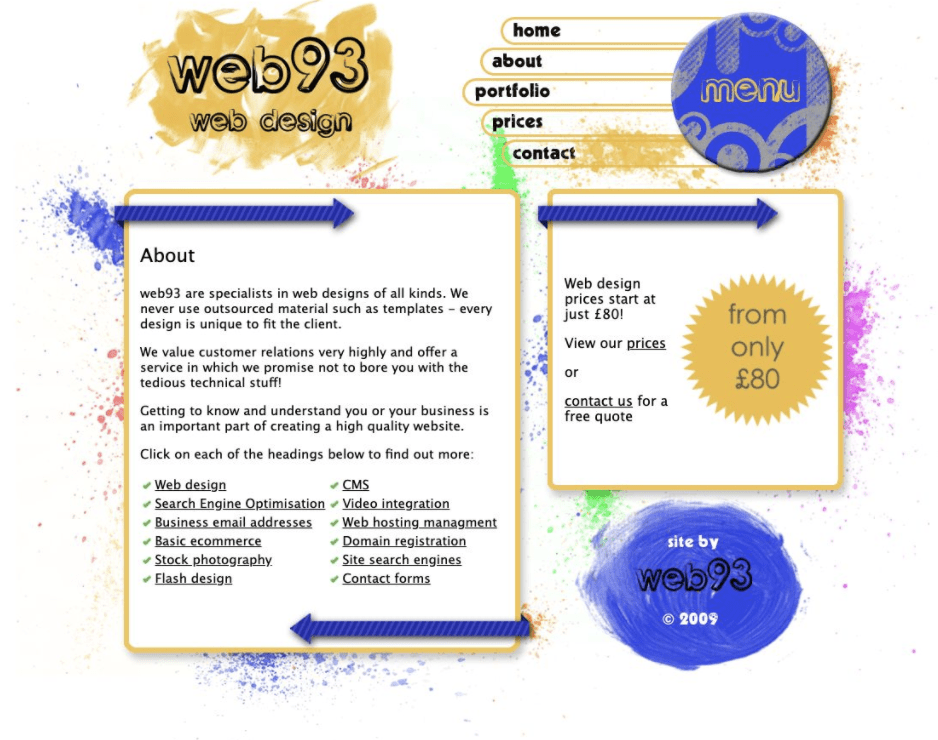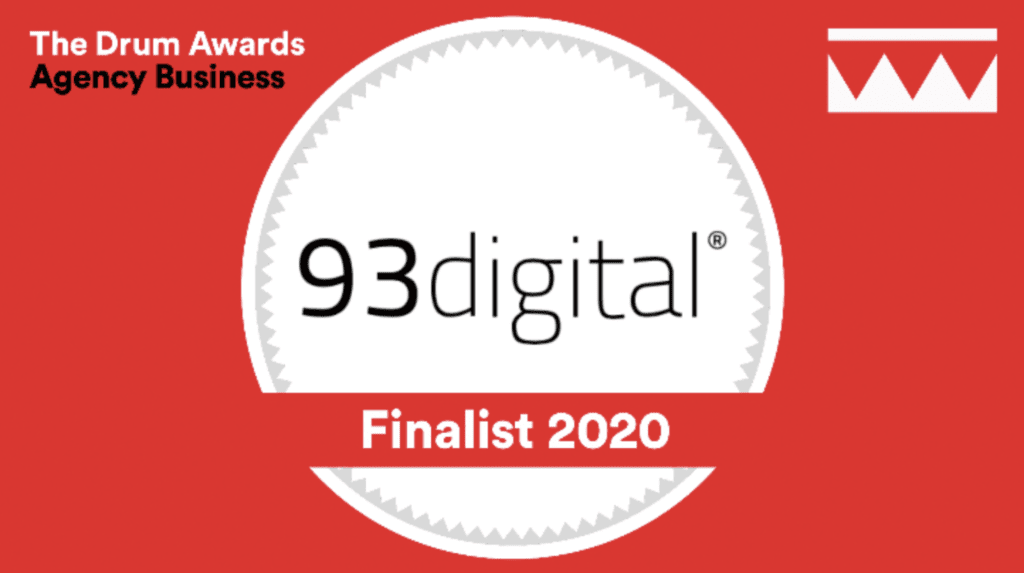6 signs your B2B website needs a strategic rethink

With another potential 6 months of working from home looming, a lot of companies are reconsidering the ways they interact with their customers and potential customers. Face-to-face meetings, exhibitions and lectures are a thing of the past (which we really hope returns soon!), so how can companies connect with their customers from the comfort of their own homes?
Many companies, particularly those focused on B2B engagement, are quickly seeing the importance of a strong digital presence in this new COVID environment.
Companies who would previously rely on face-to-face engagement are turning online to form and maintain client relationships. This has caused many companies to take a step back and consider if their digital presence truly reflects who they are as a company and whether or not it has the potential to convert its visitors into clients.
Within this article, we’re going to investigate the main tell-tale signs your website may be falling short of your objectives in the virtual world we currently find ourselves in.
1. Poor mobile optimisation
A 2020 report by SimilarWeb found that overall web traffic to the top 100 visited sites is on an upward trend, this increase is led by mobile traffic, which overtook desktop traffic for the first time in 2019, and is predicted to continue to lead the way into 2020 and beyond.

Data such as this, proves the importance of a mobile friendly website. However, an estimated nearly ¼ of websites are not optimised for mobile. The most common reasons a website may be deemed not mobile friendly include:
- Links too close together
- Content wider than the screen
- Text too small
- Images too large
It’s not uncommon for companies within the B2B sector to think ‘mobile use is just for B2C companies, we don’t need to concern ourselves with that.’ However, this couldn’t be further from the truth.
A 2017 study by BCG reported “Google has found that about 50% of B2B queries today are made on smartphones. BCG expects that figure to grow to 70% by 2020.” If we consider this paired with the data found by SimilarWeb around the growth of mobile web traffic, we can begin to paint a picture around the importance of mobile optimisation.
2. Missing SEO opportunities
Events and conferences have typically been big drivers of pipeline in B2B, but with these on pause marketers are exploring where budget can be allocated elsewhere.
If we had to put a spotlight on one trend we’ve observed, lots of B2B marketers we’ve been working with have become very serious about SEO. And most wish they had started working on their B2B SEO strategy 6 months ago, given how it can take time to build!
But within the scope of a new website project, there is a huge opportunity to consider SEO research from the start. There’s nothing worse than building a site and then trying to SEO it afterwards, so making sure SEO is considered from the offset is critical.
Check out this post as an example of what this can look like, and just how powerful it can be in terms of lead generation.
3. Unclear UX, user journeys & content structure
As much as we hate to say it, this is something we see all too often, particularly in medium to large sized B2B companies. People leave and new people join, different departments editing different areas of the website and without an overall strategic content structure in place, people upload content as they see fit for their department without considering the overall website experience.
It would be very rare for a user to only access one area of the website. We go back to the analogy of hunters and gatherers when it comes to website users.
In a nutshell, there are two types of website users depending on the stage of the buyer journey – ‘hunters’ who know exactly what they are looking for and ‘gatherers’ who prefer to browse websites collecting information on different areas. Without a clear overall content structure and defined user journeys, users gathering information from different areas of your website may get confused and become frustrated. Good UX is key to a good B2B customer experience.
A clear structure of your website’s content will also aid Google in searching and categorising the main topics of your website to determine where you can add value to searchers based on their intent. A complex spider-web of pages and subpages could damage your chances of rising through the search results.
4. Slow loading times
Another key tell-tale that it’s time to review your website is slow loading times. It’s not uncommon to see that as your company grows you have an increased need for tracking scripts to be added to your website. So you add a HotJar code here, and a Facebook Pixel code there, and all of a sudden you have multiple demanding scripts running in the background of your website, which all need to individually load before your clients, or potential clients, get to the content they require. Meanwhile the database is bloated, code poorly written and you’re not using technology like a CDN to optimise site speed.
Google has recently announced an update to how it will measure speed in the form of Core Web Vitals, and so UX and overall site speed are also important from a SEO angle.
The same thing goes for imagery, as your company evolves, you update the imagery on your website and you may even add some video content. However, the constant stream of large, high quality image and video files can start to build up and have a negative impact on your loading times.
As the loading time increases for your website, so does the bounce rate. As seen in the image below, the probability of bounce reaches over 100% with a load time of only 6 seconds (Google/SOASTA Research, 2017). However, the average website loading time is a huge 10.3 seconds (Backlinko, 2018)! Meaning the vast majority of websites are performing under the minimum expected from the majority of web users. See our free guide on how to optimise your website speed here.

5. Outdated content
One of the main reasons why our clients choose WordPress, is its agility and flexibility. Often our clients come to us frustrated with a website they find impossible to update due to a complex content management system (CMS) and lack of user support from the agency that built it.
Having a new website is great, it’s delivered shiny and new with up-to-date content and all the plugins are running on the latest versions. Great. Now what? Unless the CMS has been purposely built to ensure people without development or even web experience can easily update it, you’re likely to find that content is left dormant.
Content is the fuel the B2B marketing engine, so keeping your website up-to-date is crucial for many reasons. First and foremost, a regularly updated website means a more frequently indexed website. The more you add new articles, update pages etc. the more often the search engines will visit your site, giving you a better chance of ranking higher in the search results.
Secondly, users are keen to see an active presence online. Consider this, you are looking to work with a company, but the last evidence of an update on their website was three years ago. Alarm bells may start to ring. Are they still active? Do they have the most up-to-date expertise?
Content needs to be mapped onto the buyer journey to support the B2B buyer journey from awareness to sale.
6. Dated design
As with most things in the digital space, website design moves at a rapid pace. Since the creation of the first website back in 1991 it’s fair to say things have moved on quite a lot.
Let’s take our own website as an example. Our founder and MD, Alex, created the first ClarityDX (at the time called web93) website way back in 2009 (which we’ve managed to find a screenshot of below, sorry Alex!). Whilst this design may have worked fine back in 2009, it’s quick, simple and to the point, nowadays, 11 years on, users want to be taken on a journey and fully immersed in the culture of the company when they land on your website.

In a 2018 study on user experience, a recorded 75% of people form their opinion of a website based on how it looks. Therefore it is crucial that you consider whether your current website correctly reflects not only who your company is but the image you want to portray to the world. Otherwise, it could have severe negative effects, particularly in this increased digital world.
Whilst there are many other potential factors that may go into your need for a strategic rethink of your website. If you have read this article and thought ‘that applies to my website’, it may be time to sit down with your team and assess whether your website is meeting your expectations.
Regardless of the situation surrounding COVID and lockdown, the world is quickly becoming more digitised and focused on the online presence of businesses, whether they are within the B2B or B2C environment.
If you think you could benefit from a strategic rethink of your website, please get in touch with our team and we would be more than happy to help develop a cohesive restructure with you.

Internal day: September 2020

ClarityDX named finalists at The Drum Awards for Agency Business 2020
Let's Talk
Do you have a web design and build project coming up that you would like to talk about?